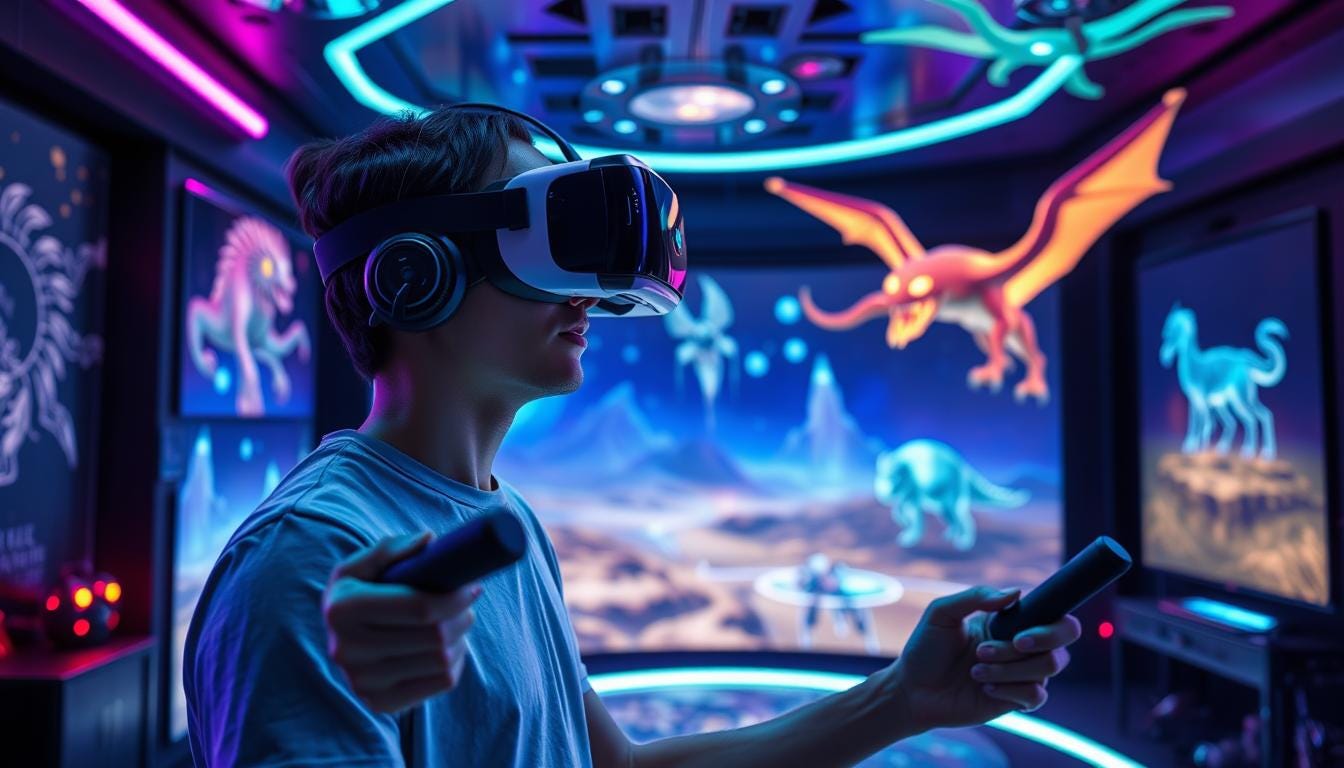The Evolution of Video Games: From 8-Bit to Virtual Reality
The journey of video games is a fascinating chronicle of technological innovation and creative evolution. What began as simple pixelated experiences has grown into a dynamic form of entertainment that rivals traditional media in storytelling, immersion, and interactivity. Today, video games are a cultural cornerstone, spanning genres, platforms, and technologies. But how did we get here? 
Let’s dive into the evolution of video games, tracing their path from humble beginnings to the immersive realms of virtual reality.
The Dawn of Gaming: Simplicity in 8-Bit Pixels
The foundation of video gaming was laid in the 1970s and 1980s with arcade machines and early home consoles. This era marked the advent of iconic titles like Pong, Space Invaders, and Pac-Man. These games were simple, built on 8-bit graphics that limited visual fidelity but captured the imagination of millions.
Technological Innovations
Early gaming hardware was rudimentary, yet revolutionary. Consoles like the Atari 2600 introduced interchangeable cartridges, expanding the library of games available to players.
- Cultural Impact: The arcade era wasn’t just about technology; it was a social phenomenon. Arcades became gathering spots, and high scores were a matter of local pride.
Despite their simplicity, these games demonstrated the potential of interactivity, paving the way for more complex experiences.
The Golden Age: Graphics and Gameplay Take Center Stage
The 1990s ushered in a golden age for video games, marked by advances in technology and design. With 16-bit and 32-bit consoles like the Super Nintendo Entertainment System (SNES) and Sega Genesis, gaming reached new heights of storytelling and immersion.
Introduction of 3D Gaming: The release of consoles like the Sony PlayStation and Nintendo 64 transformed the industry by introducing 3D environments. Titles such as Super Mario 64 and Final Fantasy VII set new standards for gameplay and narrative depth.
Rise of PC Gaming: Personal computers gained prominence, offering more advanced graphics and the ability to mod games. Franchises like Doom and Warcraft became cultural touchstones.
Emergence of Genres: The diversity of genres flourished during this period, from the birth of first-person shooters to the expansion of role-playing games (RPGs).
This era solidified video games as more than just entertainment; they became a medium for storytelling and artistic expression.
The Digital Revolution: Online Gaming and Accessibility
The early 2000s marked the beginning of the digital revolution, driven by the proliferation of the internet and mobile devices.
Online gaming became mainstream, breaking barriers of geography and connecting players worldwide.
- Massively Multiplayer Online Games (MMOs): Titles like World of Warcraft and Runescape redefined social gaming, allowing thousands of players to interact in shared virtual worlds.
- Console Connectivity: Consoles such as the Xbox and PlayStation introduced online services, enabling multiplayer gaming and digital downloads.
- Mobile Gaming Boom: Smartphones revolutionized gaming accessibility. Simple yet addictive games like Angry Birds and Candy Crush Saga brought gaming to a broader audience.
- Indie Game Renaissance: Platforms like Steam allowed independent developers to thrive, resulting in creative and unique games such as Braid and Undertale.
This era underscored gaming’s ability to adapt and expand, bringing new audiences into the fold and cementing its place in mainstream culture.
The Virtual Frontier: Immersion Redefined
As we look to the present and future, virtual reality (VR) and augmented reality (AR) represent the cutting edge of gaming technology. These innovations have transformed how players interact with games, blurring the lines between reality and the digital world.
- VR Gaming: Devices like the Oculus Rift and PlayStation VR immerse players in lifelike environments, offering unparalleled levels of interactivity. Games like Beat Saber and Half-Life: Alyx showcase the potential of this medium.
- AR Experiences: Augmented reality games such as Pokémon GO integrate digital elements into the real world, creating unique and engaging experiences.
- AI and Procedural Generation: The integration of AI allows for more responsive and dynamic gameplay. Games like No Man’s Sky use procedural generation to create expansive, ever-changing universes.
- The Metaverse: Emerging platforms like Fortnite and Roblox hint at a future where gaming, social interaction, and commerce converge in shared virtual spaces.
The evolution toward VR and AR signals a shift not just in how games are played, but in how they are experienced, offering unprecedented levels of immersion and engagement.
Conclusion
Video games have evolved from pixelated diversions to one of the most influential forms of media. Each stage of their development has been marked by innovation, from the simplicity of 8-bit games to the immersive potential of virtual reality. As technology continues to advance, the possibilities for gaming are virtually limitless. Whether through storytelling, social interaction, or groundbreaking technology, video games will remain a powerful force in shaping the future of entertainment.
References
- History of Video Games – Britannica
- The Evolution of Video Game Consoles – IGN
- How 3D Gaming Changed the Industry – GameSpot
- The Impact of Online Gaming – Wired
- The Rise of Mobile Gaming – TechCrunch
- Virtual Reality in Gaming – Oculus Blog
- Augmented Reality in Gaming – ARPost
- Indie Games: A Creative Renaissance – Polygon
- Procedural Generation in Games – Gamasutra
- The Metaverse and Gaming – Verge













![[LIVE] Engage2Earn: Save our PBS from Trump](https://cdn.bulbapp.io/frontend/images/c23a1a05-c831-4c66-a1d1-96b700ef0450/1)

























